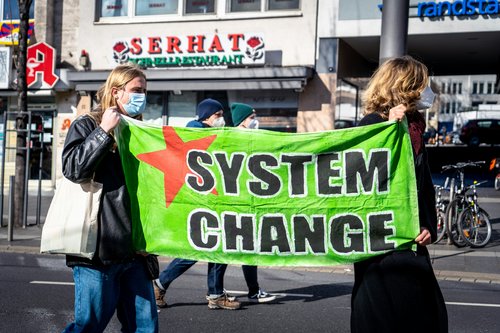The Importance Of SMEs To Trade And Economic Resilience
Tuesday, 06 August 2024By Christopher Gleadle

Introduction
Resilience involves the ability to recover from challenging situations such as economic downturns, climate events, or health crises while continuing to grow and perform well.
Resilience is strengthened by cohesive relationships and systemic governance, which in turn support strong systems that enhance performance by eliminating waste, risk, and cost. This creates significant financial value from new opportunities, stabilising both the organisation and its surrounding ecosystem.
As a result, this systemic approach reduces the need for reactive measures and emergency funding, which can further undermine value beyond the initial damage.
SMEs And The Market
Financial institutions often view SMEs as high-risk rather than essential components of value chains and economic resilience, undervaluing their contribution to risk mitigation. For instance, finance interest rates for SME loans can exceed 15%, while large businesses may secure rates at over half that level. This system design embeds vulnerability into vital components of economic resilience, entrenching this behaviour in the market system as a whole.
As a result, the market continues to undervalue SMEs, undermining the cohesion and resilience necessary for stability. Consequently, financial institutions further diminish the societal and environmental contributions of SMEs, despite their ESG messaging claiming otherwise.
How To Paralyse SMEs
The market’s perception of higher loan risks for SMEs can lead to inflated risk premiums. This results in capital costs being adjusted based on perceived risk rather than actual risk making it difficult for SMEs to compete with larger businesses that have access to cheaper finance. This discourages the creation of systemic integrated outcomes that finance is supposed to achieve, paralysing competitiveness instead of building economic resilience. This can lead to import dependency, job loss, and a skewed power structure, highlighting the need for a clear national industrial policy.

System Change Not Climate Change
The cycle of vulnerability, high capital costs, and systemic undermining of resilience exacerbates susceptibility to shocks, especially amid the climate crisis. A systemic change offers the opportunity to gain significant economic, social, and environmental benefits by reducing waste, cost, and risk, and by capitalising on currently missed opportunities. These gains benefit nations from strengthened relational trade opportunities and the communities SMEs serve and draw their skills from.
New Green Jobs
Polluting jobs often pay better than new technology jobs, as evidenced by the OECD. For example, workers in Zeeland, Netherlands' chemical sector can earn double the regional average wage. While governments can work with regions and industries to adopt new technologies, there are challenges since relying on green jobs to replace polluting jobs is not always feasible.
For example, green jobs tend to cluster in successful cities and capital regions. In 19 out of 25 OECD countries, the capital region holds the highest share of green jobs. When governments direct green jobs to lagging regions, professionals often work remotely from big cities, and construction workers only stay temporarily.
A significant obstacle to green jobs in economically weaker areas is the skills gap preventing workers from transitioning from polluting jobs to green industries. This implies that countries must develop clear plans with strong industrial policies for these regions to prevent growing inequalities and resistance to the green transition.
Grow Sustainably And Viably
Immediate action is needed. Countries must learn from past industrial transitions, for example, the US Trade Adjustment Assistance (TAA), which supported US workers displaced by global trade.
The EU’s Just Transition Fund (JTF) is a positive step in supporting regions exposed to the green transition. However, surely countries need to learn from each other and past experiences to ensure an integrated, inclusive and equitable transition that means no region is left behind, avoiding waste, cost, inequality, and lost opportunities.
A clear path involves not only government action but also the financial sector reorienting its behaviour towards SMEs as the economic engines that they are.

Sustainable Viable Clusters
The proximity of organisations with symbiotic relationships is a valuable opportunity. Integrating high-tech, low-tech, and biotech can enrich an economy with practical and cognitive diversity and foster local connections, attracting international talent.
Regional clusters can create eco-innovation hubs where collaborative symbiotic relationships emerge, integrating diverse talents and resources to accelerate innovation. Start-ups and SMEs in such environments can collaborate with larger neighbours, gaining access to technology and facilities they otherwise lack, facilitating growth and reducing risks in the value chain. This can help financial institutions shift from being an part of the problem to being a purposeful part of the solution, forming an integrated part of a sustainable and viable industrial and trade policy.
The Sphere Economy
The Sphere Economy shifts management from task or compliance-driven use of employee time to a collaborative search for innovative opportunities. It broadens thinking about habits and creates value more effectively in an unpredictable world. For SMEs, this agile structure allows them to become secure and validated performance leaders, strong inclusive partners across multiple value chains, identifying waste, risk, and cost. This design uncovers opportunities previously missed, helping to secure and stabilise regional and national sustainably viable ‘green’ economies.